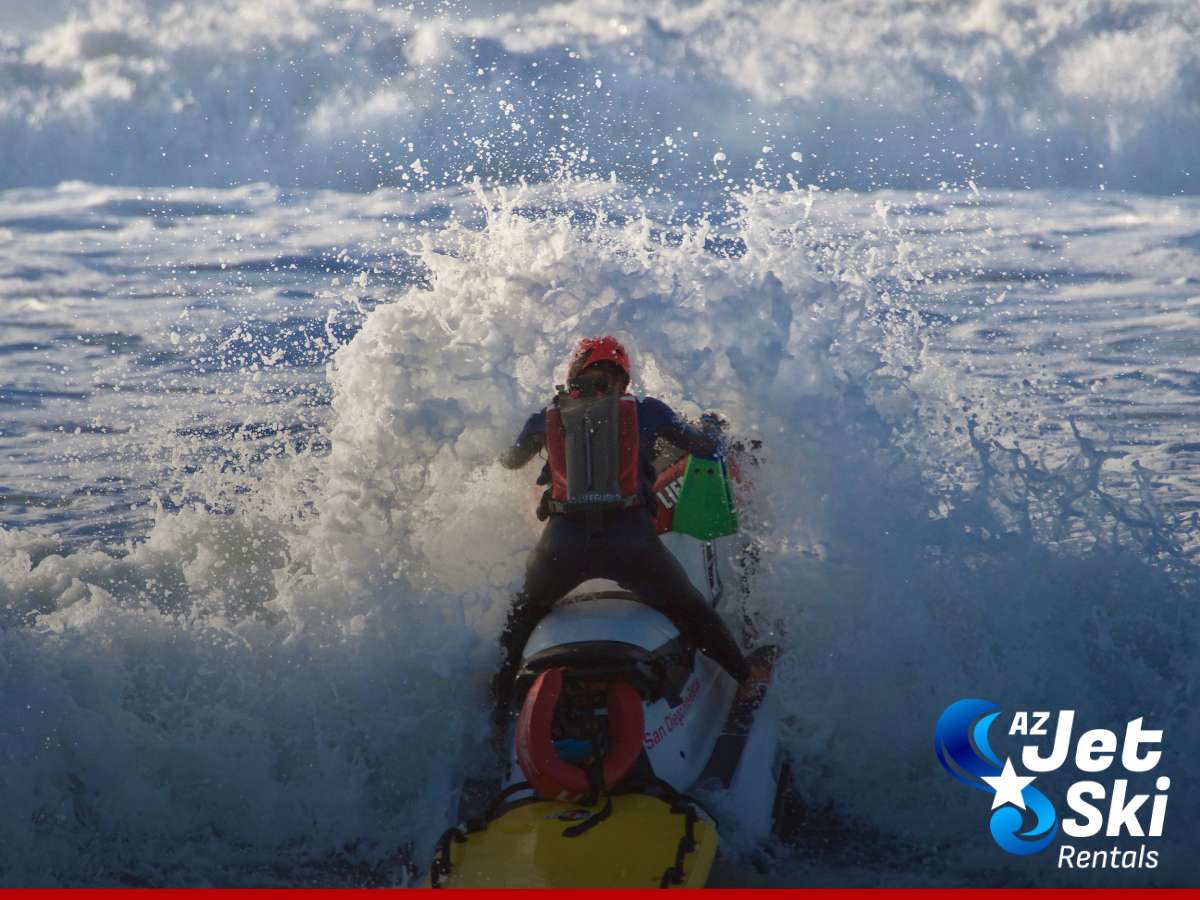Key Factors That Affect a Jet Ski’s Longevity & Performance
Jet skis provide exhilarating experiences on the water, but like any machinery, their longevity depends on proper use and maintenance. Understanding how many hours a jet ski can last, along with the factors that influence its lifespan, will help you make informed decisions and get the most out of your investment.
Beyond the thrill of riding, a jet ski is a significant financial commitment, and maximizing its lifespan requires more than just regular usage. Factors such as routine engine checks, proper storage, and adherence to manufacturer-recommended maintenance schedules play a critical role in preserving its performance.
By investing time and effort into these aspects, you can ensure that your jet ski remains a reliable companion for countless adventures on the water. Read the article below to learn more!

How Many Hours Can a Jet Ski Last?
The lifespan of a jet ski is measured in operational hours, and most models average between 300 to 500 hours of use under normal conditions. High-performance brands like Sea-Doo and Yamaha often exceed this range when properly maintained. For perspective, a jet ski used 30–50 hours per year could last 10–15 years with consistent care.
If you’re curious about how different models hold up over time, our Canyon Lake jet ski rental services offer a great opportunity to try out various options and see firsthand the durability of newer watercraft.
However, simply counting hours doesn’t give the full picture. A jet ski that has accumulated 200 hours with meticulous maintenance can outperform one with 100 poorly maintained hours. Factors like usage type, operating environment, and routine care are just as important in determining how long your jet ski will last.
What Affects a Jet Ski’s Longevity?
While the total operational hours provide a baseline, the following factors play significant roles in determining how long your jet ski remains reliable:
1. Maintenance Habits
The foundation of a long-lasting jet ski lies in regular maintenance. This includes flushing the engine after every use, especially in saltwater environments. Neglecting to remove salt and debris can lead to internal corrosion, shortening the lifespan of vital components.
Regular oil changes and routine inspections are equally important. Check the impeller for wear, clean or replace the air filter, and ensure the fuel and cooling systems are functioning optimally. Keeping up with these tasks can significantly prolong the life of your jet ski.
2. Type of Water
The type of water you ride in has a considerable impact. Saltwater is more corrosive than freshwater, which accelerates wear and tear. Even a single saltwater outing can cause long-term damage if the engine and exterior aren’t thoroughly rinsed afterward. On the other hand, freshwater is less damaging and requires less frequent cleaning.
3. Riding Style
How you ride your jet ski matters. Frequent high-speed runs, aggressive turns, and wave jumping can strain the engine and mechanical components. These activities may be thrilling, but they increase wear and tear. For those looking to maximize lifespan, smooth, steady rides are a better option.
For example, renting a jet ski gives you the chance to explore different riding styles and choose the one that best matches your preferences, ensuring you make the most of your time on the water.
4. Storage Conditions
Storing your jet ski in a proper environment is critical, especially during the off-season. Prolonged exposure to sunlight can cause fading and cracking, while rain and humidity may lead to rust and mildew. Indoor storage or high-quality covers can protect your jet ski from environmental damage.
Signs It May Be Time to Replace Your Jet Ski
Even with the best care, no jet ski lasts forever. Recognizing the warning signs that indicate your watercraft might be reaching the end of its usability is crucial for safety, performance, and cost efficiency. Here’s what to watch for:
Frequent Repairs
If your jet ski requires constant trips to the repair shop despite regular maintenance, it’s a clear sign that its components are wearing out. Over time, the cost of frequent repairs can outweigh the value of the jet ski itself, making replacement a smarter financial decision.
Decreased Performance
A noticeable drop in speed, acceleration, or fuel efficiency often points to underlying mechanical issues, such as engine wear or degraded components. Persistent performance problems not only diminish the fun but can also pose safety risks, especially in open water.
Excessive Noise or Vibrations
Unusual sounds, such as grinding, knocking, or whining, or excessive vibrations during operation, are red flags. These symptoms often indicate significant problems with the engine, drivetrain, or impeller, which may be costly or impractical to fix.
High Hour Count
While hours aren’t the sole measure of a jet ski’s lifespan, they provide a good indicator of its overall usage. A jet ski with over 500 hours or 10+ years of operation has likely reached the end of its optimal performance life. At this stage, you may find it more economical and convenient to replace it.
Outdated Technology
Older jet skis lack the modern features, safety enhancements, and fuel efficiency of newer models. If your jet ski feels outdated, upgrading can provide a more enjoyable and reliable experience on the water.
Is Renting a Viable Alternative?
Renting a jet ski can be an ideal solution for those who want to enjoy the thrill of jet skiing without the long-term commitment or expense of ownership. It’s particularly appealing for casual riders who only hit the water occasionally, or for those curious about trying out the latest models with advanced features. Here’s why renting might be the perfect option for you:
1. Cost-Effective Access to Premium Models
Purchasing a high-quality jet ski can be a significant investment, especially when you consider ongoing maintenance, storage, and potential repair costs. Renting allows you to experience the best models, often equipped with the latest technology and safety features, without these added financial burdens.
2. Flexibility for Every Occasion
When looking for a watercraft, jet ski rental options provide a variety of models to suit your needs. Whether you’re planning a weekend escape, celebrating a special occasion, or just enjoying a day on the water, renting a jet ski offers the flexibility to choose the perfect vessel for your adventure and skill level.
3. No Maintenance Hassles
One of the biggest advantages of renting is freedom from maintenance. Owning a jet ski means regular cleaning, oil changes, engine checks, and repairs when things go wrong. Rental companies handle all of these responsibilities, ensuring you can focus solely on enjoying your time on the water.
4. Try Before You Buy
If you’re considering buying a jet ski but aren’t sure which model is right for you, renting is a great way to test out different options. This hands-on experience allows you to evaluate various brands, sizes, and features before committing to a purchase.
5. Perfect for Occasional Use
If you only jet ski a few times a year, renting is far more practical than owning. You avoid the costs of year-round storage, insurance, and depreciation while still enjoying the excitement of jet skiing whenever the mood strikes.
How To Extend Your Jet Ski’s Lifespan
Whether you own or rent, these tips can help maximize the usability of your jet ski:
Follow Manufacturer Guidelines
Every jet ski comes with a user manual detailing proper maintenance schedules and recommended practices. Following these guidelines ensures your watercraft stays in optimal condition.
Winterize Your Jet Ski
Before storing your jet ski for the off-season, take steps to protect it from harsh winter conditions. Drain all water from the engine, add a fuel stabilizer, and remove the battery to prevent freezing and corrosion.
Use Quality Fuel and Oil
High-quality fuel and oil reduce buildup and improve engine performance. Avoid ethanol-based fuels that can damage the engine over time.
Inspect Before Each Ride
A quick check before hitting the water can prevent bigger problems. Look for loose or worn components, check fluid levels, and ensure all safety features are operational.
Get the Most Out Of Your Jet Ski: Maximize Its Lifespan or Rent Hassle-Free
Understanding your jet ski’s lifespan is key to maximizing its value and enjoyment. While most jet skis last 300–500 hours with proper care, factors like maintenance, riding style, and storage conditions play vital roles in determining their longevity. If your current watercraft is nearing the end of its life, renting from a trusted provider like Arizona Jet Ski Rentals can keep you on the water without the hassle of ownership.
Make the most of your water adventures with us. Explore our high-quality jet skis and seamless delivery options today! Don’t hesitate to contact us now.

AZ JET SKI RENTAL
5040 E Dartmouth St,
Mesa, AZ 85205
Office: 480-272-4686
Email: azpowersports01@gmail.com
Website: www.jetskirentalarizona.com


